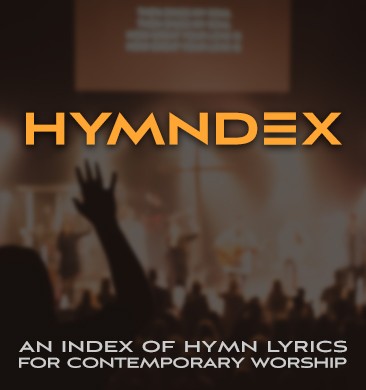Church worship has evolved greatly over the past few decades, with many congregations embracing fresh approaches to connect with their communities. In the same vein, contemporary worship services have become increasingly popular, offering a modern way to experience God’s presence while maintaining the heart of biblical worship.
Contemporary worship service applies to both sides of the religious spectrum, from leaders considering the transition to church members curious about what to expect. Either way, fully grasping the contemporary worship service format can help you appreciate this meaningful expression of faith.
What is a Contemporary Worship Service?
A contemporary worship service is a modern approach to corporate worship that emphasizes current musical styles, informal atmosphere, and interactive engagement. Unlike traditional services that follow centuries-old liturgical patterns, contemporary worship services prioritize accessibility and relevance for today’s worshippers.
The key characteristics that define a contemporary worship service include:
Modern Musical Expression
Contemporary worship services feature praise and worship songs, often accompanied by full bands including guitars, keyboards, drums, and contemporary vocal arrangements.
These songs typically use accessible language and melodies that your congregation can easily learn and sing along with. Effective worship song selection strategies can help ensure your congregation connects deeply with the music.
Informal Atmosphere
Contemporary worship services embrace a more relaxed environment rather than formal liturgy. Pastors and worship leaders often dress casually and speak conversationally, creating an approachable atmosphere where newcomers feel welcome.
Technology Integration
Most contemporary worship services utilize modern technology, including projection screens for lyrics, video elements, professional sound systems, and dynamic lighting to improve the worship experience.
The fundamental differences from traditional services lie not in theological content but in presentation style. Where traditional worship might feature hymns played on organ or piano, contemporary worship service format incorporates electric instruments and modern arrangements.
While traditional services follow established liturgical orders, contemporary services offer more flexibility in structure and flow.
Sample Order of Worship for Contemporary Service
Planning a contemporary worship service requires thoughtful consideration of flow and engagement. Here’s a sample order of worship for a contemporary service that many churches find effective:
- Welcome and Announcements (5-10 minutes): The service often (but not always) begins with a warm, personal welcome from a pastor or worship leader. This segment includes essential church announcements, upcoming events, and often highlights celebrating God’s work in the congregation.
The tone leans towards conversational and inviting, helping both regular attendees and first-time visitors feel included.
- Opening Worship Songs (15-20 minutes): The worship set usually starts with 3-4 upbeat, energetic contemporary songs that invite the congregation into God’s presence.
These opening songs often focus on praise, celebration, and declaring God’s greatness. Popular choices might include modern worship anthems that get people moving and singing enthusiastically.
- Prayer or Scripture Reading (3-5 minutes): Following the energetic opening, many contemporary worship services include a moment for corporate prayer or responsive Scripture reading. This transition helps shift the congregation’s focus from celebration to preparation for receiving God’s Word.
- Message/Sermon (25-35 minutes): The sermon remains central to contemporary worship services, typically delivered in a conversational, practical style. Pastors often use multimedia elements, personal stories, and relevant illustrations to communicate biblical truths in ways that connect with everyday life.
- Response Worship Songs (10-15 minutes): After the message, the worship team leads 2-3 more reflective, emotional songs that allow the congregation to respond to God’s Word. These songs often focus on surrender, commitment, or intimate worship, providing space for personal reflection and spiritual response.
- Closing Remarks and Benediction (3-5 minutes): The service concludes with final announcements, prayer requests, and a blessing or benediction. Many contemporary services end with an invitation for personal prayer or ministry time.
Contemporary Worship Service Format
The contemporary worship service format offers remarkable flexibility while maintaining essential elements of biblical worship. This adaptability allows churches to tailor their services to their specific congregation’s needs and cultural context.

Flexible and Adaptable Structure
Unlike rigid liturgical formats, contemporary worship services can easily incorporate special elements like baptisms, communion, or seasonal celebrations.
Worship leaders can extend or shorten segments based on the Holy Spirit’s leading and the congregation’s response. Some Sundays might feature longer worship sets when the presence of God is particularly tangible, while other services might emphasize the teaching portion.
Multimedia Integration
Modern contemporary worship services effectively use multimedia elements to enhance the worship experience. Projection screens display song lyrics, eliminating the need for hymnals and allowing worshippers to lift their hands and eyes. Video announcements, sermon illustrations, and background visuals create engaging, multi-sensory experiences that help communicate God’s truth effectively.
Professional lighting systems create atmosphere and focus attention during different service segments. Subtle lighting changes can shift the mood from celebratory opening songs to intimate response moments, helping guide the congregation’s worship journey.
Emphasis on Participation and Engagement
Contemporary worship services prioritize active congregation participation over passive observation. Worship leaders encourage singing, clapping, raising hands, and other physical expressions of worship.
Many services include interactive elements like responsive readings, corporate declarations, or opportunities for congregation members to share testimonies or prayer requests.
The informal atmosphere removes barriers that might prevent people from fully engaging in worship. When visitors see others freely expressing their love for God without judgment or rigid expectations, they often feel more comfortable participating themselves.
This format particularly appeals to younger generations and those from non-church backgrounds who might find traditional liturgy intimidating or unfamiliar.
However, contemporary worship services attract worshippers of all ages who appreciate the combination of biblical truth presented in accessible, relevant ways. Building engaged worship teams helps create the kind of authentic worship environment that draws people closer to God.
Bottom Line
Contemporary worship services offer churches a powerful way to create authentic, engaging encounters with God while remaining faithful to biblical principles.
Their flexible format, modern musical expression, and emphasis on participation all drive these services, which are particularly effective for reaching diverse congregations and welcoming newcomers.
For churches considering a contemporary worship service, remember that the goal is to create meaningful opportunities for people to connect with God. The sample order of worship for contemporary service provides a helpful starting point that each congregation can adapt to serve their unique community effectively.
Whether your church embraces fully contemporary services or blends traditional and modern elements, the heart remains unchanged: gathering to honor God and encourage one another in faith. Contemporary worship simply offers another avenue for expressing our devotion to the God who deserves our very best.
FAQs
What is a contemporary worship service exactly?
A contemporary worship service uses modern music, informal atmosphere, and technology to create accessible, engaging worship experiences for today’s congregations.
How long should a sample order of worship for a contemporary service be?
A sample order of worship for a contemporary service typically runs 60-90 minutes, including welcome, worship songs, sermon, and response time.
What makes the contemporary worship service format different from traditional?
The contemporary worship service format emphasizes flexibility, modern music, multimedia elements, and informal participation over rigid liturgical structure.
Can any church start using contemporary worship service styles?
Yes, any contemporary worship service can be effectively adapted to fit different church sizes, denominations, and congregational preferences.
Is contemporary worship service appropriate for all age groups?
Contemporary worship service appeals to all ages, though it particularly connects with younger generations and those new to church.








